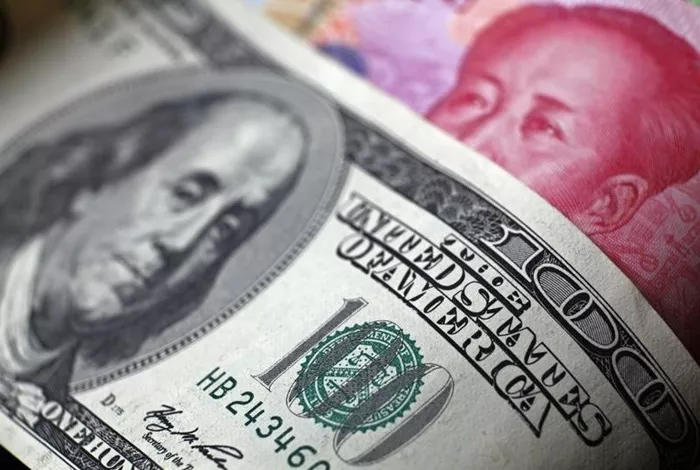Most Asian currencies weakened on Monday, with the Chinese yuan particularly vulnerable, as limited relief on U.S. trade tariffs failed to provide much support. Meanwhile, concerns over economic challenges pushed the U.S. dollar to its lowest levels in three years.
The Japanese yen stood out, performing well as demand for safe-haven assets remained high. The USD/JPY pair dropped 0.3% to 143.09 yen, nearing its strongest level in six months.
In recent weeks, other Asian currencies have taken a hit, largely due to the escalating trade war between the U.S. and China. Both nations imposed steep tariffs on each other, adding to investor uncertainty. However, the White House offered some relief over the weekend by announcing that electronics will be exempt from President Donald Trump’s new 145% tariffs on China.
Chinese Yuan Faces Weakening Pressure
The Chinese yuan continued its slide, with the USD/CNY onshore pair rising 0.2% after another weak midpoint fix from the People’s Bank of China (PBOC). The yuan had reached a 17-year low last week, largely due to Beijing’s strategy of devaluing the currency to counter the impact of U.S. tariffs.
The PBOC has set a weaker midpoint for seven out of the last eight sessions, signaling China’s efforts to cushion the blow of the U.S. trade war. Following Trump’s recent tariff hike to 145%, Beijing retaliated with 125% tariffs of its own.
Despite this, China’s trade surplus for March exceeded expectations, driven by a sharp rise in exports before the new U.S. tariffs were enforced. While the White House’s tariff exemption on electronics gave a temporary boost to Chinese exporters, President Trump has indicated that new tariffs on electronics may be announced soon.
Dollar Dips Amid Recession Fears
The U.S. dollar continued its decline on Monday, with the dollar index and its futures reaching their lowest points since April 2022. Despite some relief from the trade tariff developments, the dollar remained under pressure from growing recession fears and rising Treasury yields.
The U.S. Federal Reserve signaled its intention to support the economy, with potential interest rate cuts looming. This, in turn, has contributed to the dollar’s weakened performance. Several Fed officials, including Chairman Jerome Powell, are scheduled to speak this week, which could offer further clues on the central bank’s next steps.
Mixed Performance Across Other Asian Currencies
Other Asian currencies showed little movement amidst the ongoing trade tensions. The Singapore dollar fell 0.2% against the U.S. dollar, following weaker-than-expected GDP data for the first quarter of 2025. The country’s central bank also eased its monetary policy slightly for the second time this year.
The South Korean won rose 0.5%, while the Australian dollar gained 0.2%. Meanwhile, the Indian rupee weakened by 0.4% in thin holiday trading.
The broader Asian currency market remains largely flat, with little relief from the persistent trade war between the U.S. and China.
Related Topics:


